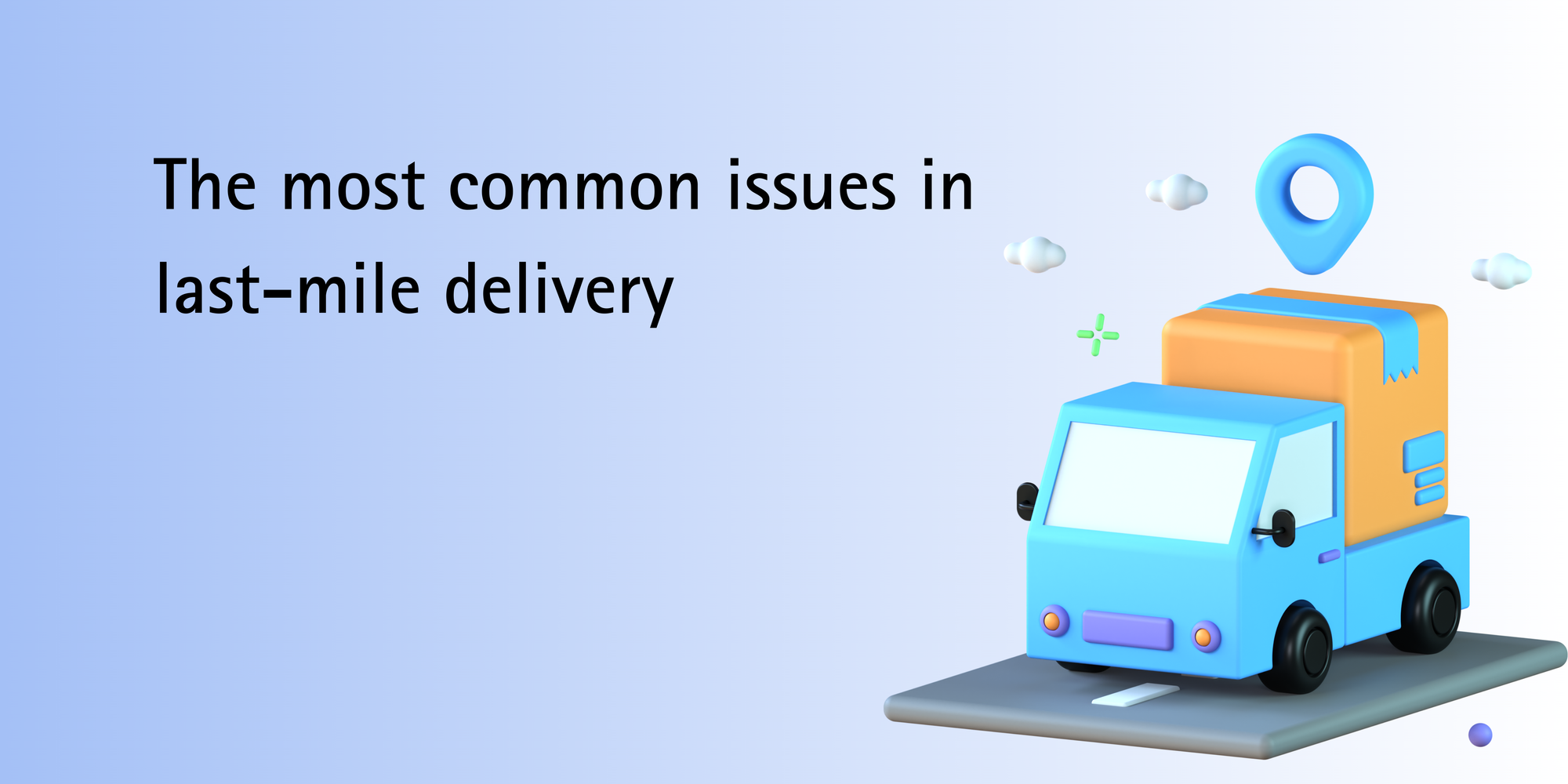The most common issues in last-mile delivery

Introduction:
Last-mile delivery is the last part of the delivery process, when goods are taken from a transportation hub to the end customer. This part of the delivery process can be the hardest because it often involves going through busy cities, dealing with traffic, and delivering to homes or places that are hard to get to.
In this blog post, we’ll talk about some of the most common issues that can happen during last-mile delivery and how to solve them.
1. Traffic and Route Planning:
Congestion on the roads is one of the main problems that last-mile delivery drivers have to deal with. This can cause delays, use up more fuel, and cost the delivery company more money. Route optimization software can help delivery companies plan the best routes for their drivers so that this problem doesn’t get too bad. They can also use real-time traffic information to avoid crowded areas and plan alternate routes in case traffic is slow.
2. Delivery Accuracy:
Another common problem with last-mile delivery is that it’s hard to find the place where the package needs to be left. This can be hard to do in cities with lots of people because streets and buildings may not be well-marked. To solve this problem, delivery companies can use GPS tracking and geolocation technology to help drivers find their way to the right address. They can also use mobile apps to let customers know when to expect their packages by giving them real-time tracking information.
3. Theft and damage to goods:
Often, it’s the job of the last-mile delivery driver to make sure that goods are delivered safely and securely. Theft and damage to goods can be a problem, especially in places with a lot of crime. Delivery companies can use secure packaging and seals that can’t be broken to make packages less likely to be stolen or broken. They can also protect their drivers and vehicles with surveillance cameras and other security measures.
4. Limited delivery window:
In some cases, last-mile delivery drivers may have to deliver goods during business hours or during a certain delivery window. This can be hard because drivers may have to work longer hours or get around when there is a lot of traffic. To solve this problem, delivery companies can use scheduling software to optimise their delivery routes and make sure that drivers have enough time to make all of their deliveries.
5. Unserviceable pincodes:
Access to delivery locations may be hard in some cases, like when streets are too narrow or there aren’t enough parking spots. This can make it hard for delivery drivers to finish their jobs on time. To solve this problem, delivery companies can use smaller vehicles or cargo bikes for the last mile of delivery in cities, or they can work with local authorities to get temporary parking permits for delivery vehicles.
6. Integration of systems:
One of the biggest challenges for companies that do last-mile delivery is putting together different technologies and systems. This means connecting order management systems, transportation management systems, and warehouse management systems so that orders are filled and delivered quickly and efficiently.
7. Order tracking:
Companies that make last-mile deliveries need to know where their packages are and what their status is at all times. To do this, you need to use GPS tracking, geolocation technology, and other monitoring systems that can give you information about the delivery process in real time.
8. Lack of delivery Automation:
As last-mile delivery gets more complicated, companies are turning to delivery automation and robotics to improve efficiency, cut costs, and improve customer service.
9. Cybersecurity:
The use of technology in the last mile of delivery is growing, and so is the chance of cyberattacks. Companies need to make sure that their systems are safe and can’t be broken into or have their data stolen.
10. Getting used to new technologies:
Because technology is changing so quickly, last-mile delivery companies need to keep up with new technologies and be able to adapt to new trends, such as 5G, IoT, and blockchain based logistics.
11. Finding insights from data:
Last-mile delivery companies have to be able to manage and analyse a lot of data because of how they work. This includes information about delivery routes, how well drivers do their jobs, how vehicles are used, and how customers act. By using this data, businesses can improve how they run and make better decisions.
By being aware of and fixing these common problems, delivery companies and D2C brands can make their last-mile delivery operations more efficient and effective. They can also give customers a better experience by making sure goods are delivered on time and safely.
How Floww helps with solving last-mile delivery problems?
With Floww, you can track your orders, delivery fleet, and generate intelligent reports to make sense of your business data. Floww APIs help with marketplace integration, shipping integration, payment integration and more. With Floww Notification Intelligence you can automate delivery status updates that are sent to your customers. It also offers seamless marketplace integration and real-time tracking of your fleet.
Visit Floww for the ultimate last-mile logistics solutions

